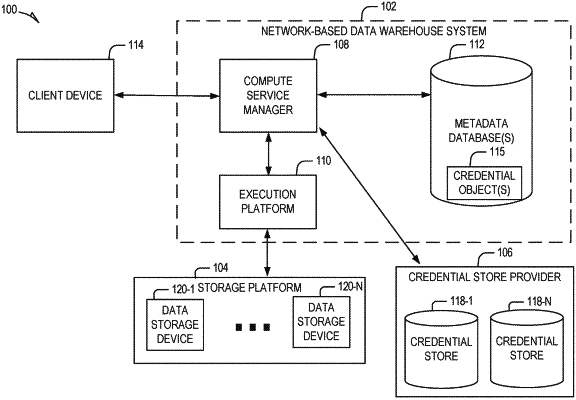| CPC G06N 20/00 (2019.01) [G06F 16/256 (2019.01); G06F 16/283 (2019.01); G06F 18/214 (2023.01); G06F 21/6227 (2013.01)] | 30 Claims |

|
1. A method comprising:
providing access to a user defined function to be executed in a database system to a first user of a cloud data platform, the user defined function generated by a second user of the cloud data platform, the user defined function comprising a machine learning model for training on a training dataset;
identifying, by at least one hardware processor, a request from the second user to train the machine learning model on a first training dataset and a second training dataset, the first training dataset being encrypted in the user defined function and the second training dataset including non-overlapping dataset features with the first training dataset;
enabling the user defined function to use training data from both the first user and the second user to train the machine learning model;
preventing training data from the first user from being revealed to the second user;
preventing training data from the second user from being revealed to the first user; and
generating one or more outputs from the trained machine learning model by applying the trained machine learning model on new data.
|